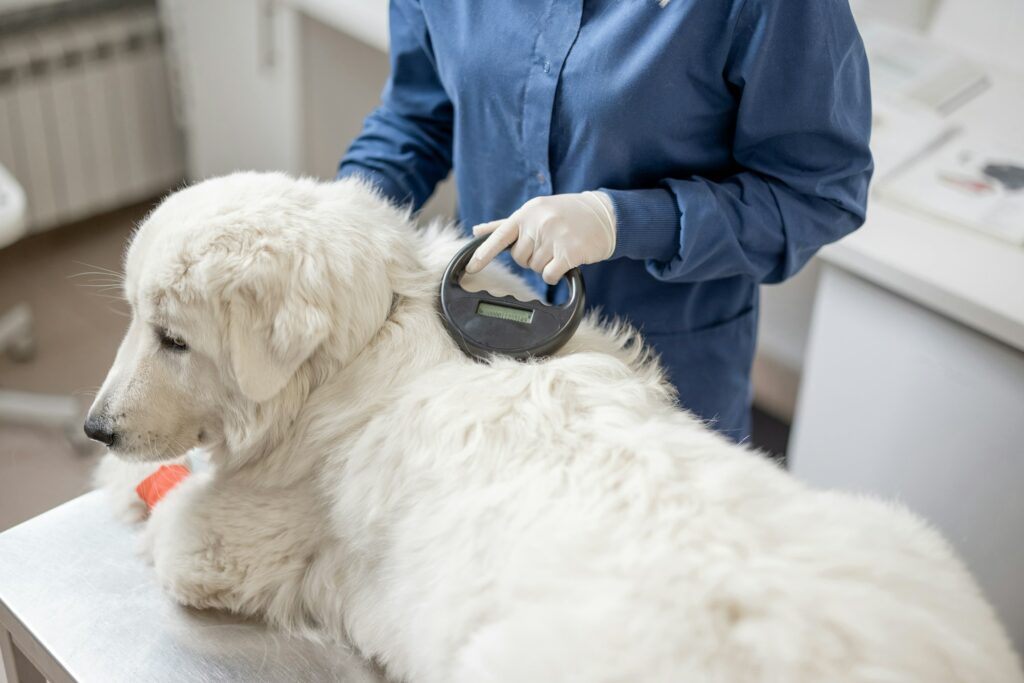Coming across a stray dog can stir a myriad of emotions within us. Feelings of sadness, empathy, and even fear can often intertwine, especially when we see them in dire circumstances. The desire to help can be overwhelming for animal lovers, yet the uncertainty of how to approach this situation can be paralyzing. This sentiment is not unfounded. After all, dealing with stray dogs requires caution, understanding, and knowledge about their behavior. This blog post serves as a guide for such instances. With this information, you can ensure your safety and well-being and that of any stray dogs you may come across, transforming a potentially stressful encounter into a positive experience for both parties.
Tips for Helping Stray Dogs
In our journey to assist stray dogs, it’s crucial to approach the situation with a game plan. The following tips provide practical steps that you can take to safely and effectively provide help. These suggestions work to ensure the welfare of the dog while safeguarding your own well-being.
Be Cautious When First Approaching the Dog
It’s of utmost importance to exercise caution when first approaching stray dogs. This is because the dog might be scared, confused, or in distress, which can cause unpredictable behavior. Always approach slowly and calmly, without making direct eye contact, as this can be perceived as a threat. Make sure to speak softly and soothingly to help reassure the dog. If the dog shows signs of aggression or fear, such as growling, baring their teeth, or retreating, it’s best to maintain your distance and call a local animal control or rescue organization for assistance.
Get Them Scanned for A Microchip

One of the first things you should do when coming across stray dogs is to take them to a vet or an animal shelter to have them scanned for a microchip. Microchips are a common method used by pet owners to keep track of their pets and can provide contact information for the dog’s owner. Many vets and shelters have scanners and will perform this service for free.
If the dog is microchipped, this could quickly resolve the situation by enabling you to get in touch with the owner and return their lost pet.
Get a Temporary ID for Them, Just in Case
If the dog doesn’t have a microchip or any form of identification, getting them a temporary ID with your contact information would be a good idea. This can be incredibly helpful in case they happen to get lost again while they’re under your care. This temporary ID can be made easily at most pet stores and can provide essential information for anyone who might find the dog, thus ensuring the dog’s safety until a more permanent solution is found.
Don’t Assume that the Dog is Abandoned
Many stray dogs may appear abandoned due to their poor condition, but it’s crucial not to jump to conclusions. It’s entirely possible that a dog in bad shape is a lost pet who has been missing for a while. They may have a loving family frantically searching for them. Their ragged appearance could be due to prolonged exposure to harsh conditions, lack of food, or illness. Hence, checking for identification and reporting the dog to local animal control and shelters is always important. This could be the key to reuniting a worried family with their beloved pet.
Check Your Local Regulations
Before you take any action, it’s important to familiarize yourself with your local regulations regarding stray animals. Different areas may have different protocols for handling stray dogs. Some may require you to report the dog to local authorities, while others may encourage citizens to take the dog to a local shelter. Understanding these regulations can help you comply with local laws and ensure that the dog receives the best possible care. Being aware of these procedures can streamline the process and increase the chances of reuniting the dog with its family.
Understand That A Lost Dog Can Travel Significant Distances
Stray dogs, particularly those that are lost, can travel significant distances. Their inherent curiosity and exploratory nature can lead them far from their homes when they are left unguided. This is especially true if they are scared or confused, which can prompt them to traverse miles into unfamiliar territory. Therefore, it’s essential not to hastily conclude that stray dogs have been abandoned just because they’re found in areas far removed from residences or populated locations. It’s entirely feasible that these stray dogs have simply lost their way and have journeyed a considerable distance in their quest for food, shelter, or to find their owners.
Don’t Underestimate the Power of Social Media and Posting Flyers
Social media platforms and physical flyers are powerful tools in helping locate stray dog owners. Posting pictures and information about the dog on social media can reach a broad audience quickly and efficiently. Similarly, putting up flyers in the area where the dog was found can also be effective, as the owners are likely to be local. Both methods allow for the possibility that someone recognizes the dog and knows the owner. Hence, they should not be underestimated when dealing with stray dogs.
Ways You Can Stop the Influx of Stray Dogs
While encountering a stray dog can be distressing, it’s important to remember that this is a symptom of a much larger issue. The number of stray dogs on our streets is a significant problem that requires a collective effort to address. In the following section, we will explore various ways you can contribute to reducing the number of stray dogs and helping to ensure that every dog has a safe and loving home.
Know What Causes Pet Homelessness
Understanding what causes pet homelessness is the first step toward solving the issue of stray dogs. Overpopulation due to uncontrolled breeding is a major contributor to this problem. Many pet owners fail to neuter or spay their pets, resulting in unwanted litters that often end up on the streets.

Additionally, some owners abandon their pets due to financial constraints, lifestyle changes, or simply because they have become too much of a burden. Lack of proper identification methods also leads to pets getting lost and becoming stray dogs. By recognizing these causes, we can take proactive measures to prevent pet homelessness and, ultimately, reduce the number of stray dogs.
Make Sure to Spay and Neuter Your Dog
As mentioned above, uncontrolled breeding is one of the main contributors to stray dogs. Spaying and neutering your dog is a responsible and effective measure to prevent unwanted litters that may end up on the streets. This helps control the population of stray dogs and has health benefits for your pet, such as reducing the risk of certain cancers. Spaying and neutering can also help reduce behavioral issues in dogs, such as aggression or the desire to roam. By choosing to spay or neuter your dog, you are playing a crucial role in addressing the problem of stray dogs.
Adopt a Dog Instead of Buying
Instead of buying a dog, consider adopting. There are countless stray dogs in shelters that are in desperate need of loving homes. These dogs are often just as affectionate, loyal, and intelligent as any dog you buy from a breeder. When you adopt, you give a dog a second chance at life and help alleviate the problem of overpopulation in shelters. Furthermore, adoption fees are often much less than the cost of buying a dog from a breeder or pet store. By opting for adoption, not only do you get a new furry friend, but you also contribute to the solution of the issue concerning stray dogs.
Volunteer
Volunteering at local shelters is another great way to help stray dogs. Shelters often need volunteers to help with various tasks, including feeding and walking dogs, cleaning kennels, and even providing basic training to the dogs. It’s a hands-on way to directly impact the lives of stray dogs and provide them with much-needed socialization and care. Additionally, volunteering can help raise awareness about the plight of stray dogs and promote responsible pet ownership within your community.
Take Steps to Ensure Your Dog Doesn’t Get Lost
One proactive measure you can take to prevent the increase of stray dogs is to ensure your dog doesn’t get lost. This can be done by properly securing your home and yard to prevent your dog from escaping. Use fences or gates that are high enough and secure enough that your dog can’t jump over or dig under them. Train your dog to respond to commands, especially the recall command, as this could be vital in a situation where your dog gets loose. Also, always use a leash when taking your dog out for a walk, especially in unfamiliar areas. Lastly, proper identification methods such as tags, collars, and microchips should be used. These can be invaluable in reuniting you with your dog should they become lost, thus reducing the number of stray dogs.
Help Any Lost or Stray Dogs You May Come Across
Helping any lost or stray dogs you may come across is a compassionate and responsible act. When you encounter stray dogs, remember to approach them carefully, as they might be scared or defensive. If possible, check for any identification tags or have them scanned for a microchip at a local vet or animal shelter. This could quickly help reunite them with their owner. If they have no identification, consider reporting them to local animal control or a nearby shelter. By offering your assistance to stray dogs, you’re not only helping them find their way back home or to a safe environment, but you’re also contributing to a decrease in the stray dog population.
Donating to Organizations like WPP to Help Stray Dogs
One of the most effective ways to help stray dogs is to provide financial support to organizations dedicated to their rescue, rehabilitation, and rehoming. Wounded Paw Project (WPP) is one such organization that works tirelessly to provide stray dogs with the care, love, and support they desperately need.
Your donation to WPP can make a difference in the lives of these dogs. It can help cover the costs of medical treatments, food, and shelter and help ensure the successful operation of various programs aimed at reducing the stray dog population. It’s an investment in a world where every dog is treated with kindness, compassion, and respect, regardless of their circumstances.
The plight of stray dogs is a pressing issue that requires our collective efforts. By understanding the causes of pet homelessness, taking preventative measures, offering immediate assistance to stray dogs we encounter, and supporting organizations like WPP, we can all contribute to a future where no dog is left without a loving home. Your actions, no matter how small, can help transform a stray dog’s life for the better.
